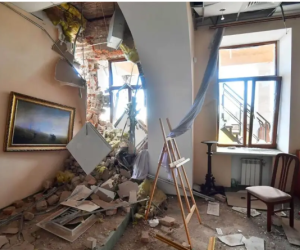National Gallery unveils German art it once sold off as 'ugly'

Susan Foister, co-curator of the show, Strange Beauty: Masters of the German Renaissance, described the disposal of 37 works in 1856 as a "surprising" and little-known story. "It was the first and only time that the gallery had an act of parliament passed in order to rid itself of excessive German paintings," she said.The main issue was that for much of the 19th and 20th centuries, German art was considered ugly and certainly hugely inferior to anything produced in Italy. Sir Charles Eastlake, director of the National Gallery from 1855-65, once said he found the work of Matthias Grünewald "repulsive".In 1854, William Gladstone, then chancellor of the exchequer, bought 64 German Renaissance paintings from the 15th and 16th centuries for the gallery. It was considered a scandal. One newspaper called them "frightful" and a parliamentarian said the purchase was the "worst ever" – what was the National Gallery thinking of?Foister said that "there was an idea of what should be collected and what should be admired". And German paintings did not fit the idea.Within just two years the gallery's trustees felt they had to get rid of them. That resulted in an act of parliament permitting their deaccession and 37 were sold, including most of an altarpiece from the Benedictine abbey of Liesborn in Germany.As well as letters and ledgers from the time, the new exhibition shows what the National Gallery squandered by recreating the Liesborn altarpiece with works it still owns from the altarpiece along with photos of some of those it sold.The exhibition recreates a room from the gallery's founding year of 1824, and there is not a single German work.One aim of the exhibition is to explore why German art caused such a visceral reaction. Visitors in the final room are encouraged to give their opinions on what makes a work of art beautiful, with questions posed such as "are beauty and expression incompatible? Can art be both inventive and true to nature?"The exhibition allows the gallery to display some of the fine German paintings owned by it and other British collections. It includes Holbein's huge and spectacular The Ambassadors and his tiny and stunning miniature of Anne of Cleves, loaned by the V&A. In another room is the National Gallery's own Cupid Complaining to Venus, by Lucas Cranach the Elder, bought in 1963. Admirers can contemplate the fact that Hitler was a huge fan, hanging it in the sitting room of his Munich flat before it was moved to one of his bunkers.Other artists in the show include Hans Baldung Grien and Albrecht Dürer.The gallery's director, Nicholas Penny, acknowledged that the new show laid bare the historic "failings and limitations" of some of his predecessors. "It is a very original exhibition and I'm learning a great deal about the National Gallery's history from it," he said. It was "not very grown up to pretend you've always been perfect," he added.Foister, his deputy, agreed. "I think it is time to explore our history even if it is a bit difficult or uncomfortable at times."(theguardian.com)ANN.Az




































 Photo
Photo 



 Video
Video 

